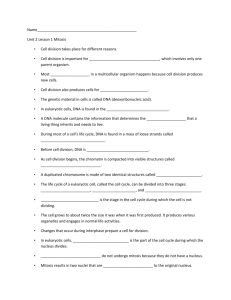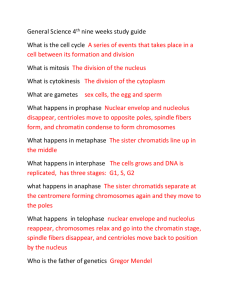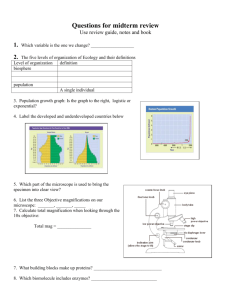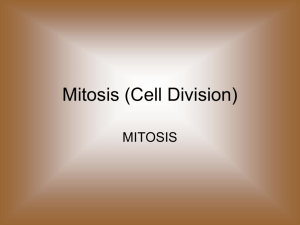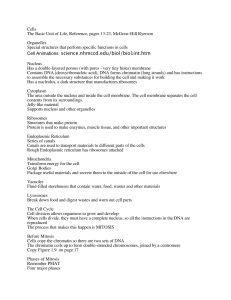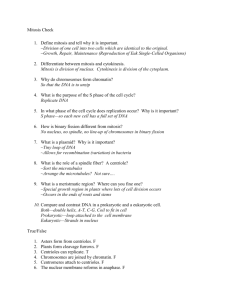CD1
advertisement
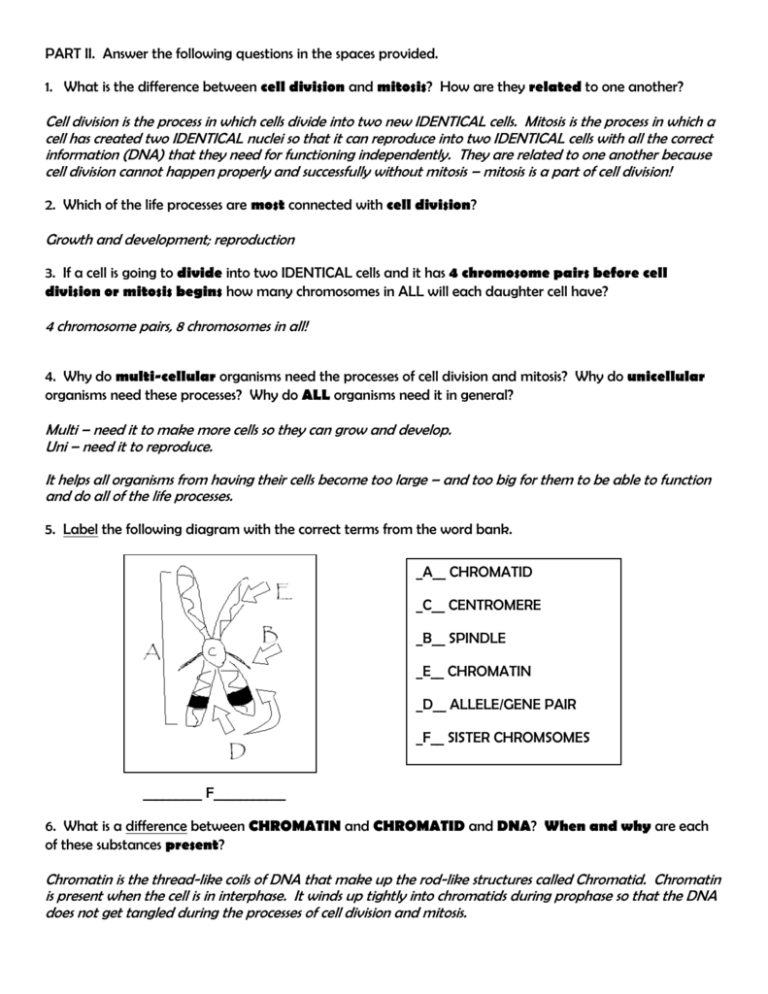
PART II. Answer the following questions in the spaces provided. 1. What is the difference between cell division and mitosis? How are they related to one another? Cell division is the process in which cells divide into two new IDENTICAL cells. Mitosis is the process in which a cell has created two IDENTICAL nuclei so that it can reproduce into two IDENTICAL cells with all the correct information (DNA) that they need for functioning independently. They are related to one another because cell division cannot happen properly and successfully without mitosis – mitosis is a part of cell division! 2. Which of the life processes are most connected with cell division? Growth and development; reproduction 3. If a cell is going to divide into two IDENTICAL cells and it has 4 chromosome pairs before cell division or mitosis begins how many chromosomes in ALL will each daughter cell have? 4 chromosome pairs, 8 chromosomes in all! 4. Why do multi-cellular organisms need the processes of cell division and mitosis? Why do unicellular organisms need these processes? Why do ALL organisms need it in general? Multi – need it to make more cells so they can grow and develop. Uni – need it to reproduce. It helps all organisms from having their cells become too large – and too big for them to be able to function and do all of the life processes. 5. Label the following diagram with the correct terms from the word bank. _A__ CHROMATID _C__ CENTROMERE _B__ SPINDLE _E__ CHROMATIN _D__ ALLELE/GENE PAIR _F__ SISTER CHROMSOMES _________ F___________ 6. What is a difference between CHROMATIN and CHROMATID and DNA? When and why are each of these substances present? Chromatin is the thread-like coils of DNA that make up the rod-like structures called Chromatid. Chromatin is present when the cell is in interphase. It winds up tightly into chromatids during prophase so that the DNA does not get tangled during the processes of cell division and mitosis. 7. What roles do the centromere and the spindle play in cell division? The centromere is the point at which sister chromosomes attach to each other. The centromere also attaches to the spindle – the “fishing line” produced by the Centrioles to help organize the DNA during cell division to ensure that the daughter cells get the right kind and amount of DNA.

